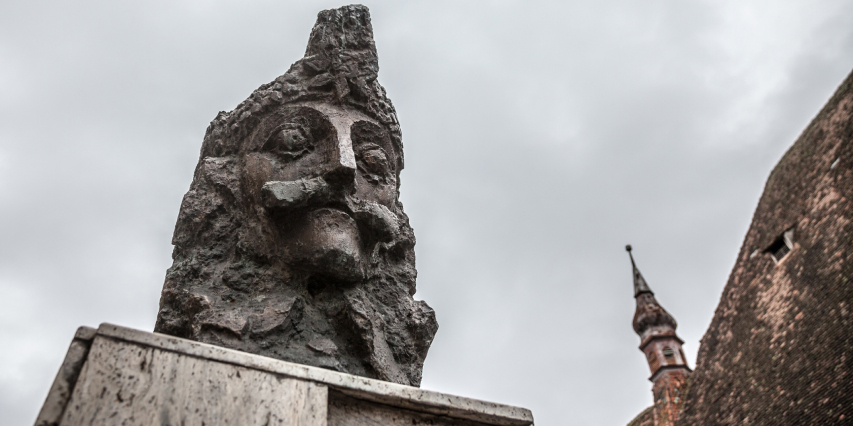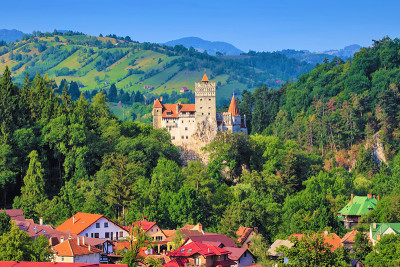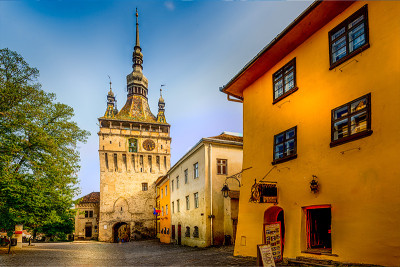We all know who Dracula is, right? He is a vampire with pale skin, sharp fangs, and long dark cape. He normally has dark hair and a fear of garlic (and crosses). Maybe you have seen a cartoon or a movie featuring this character.
Maybe you have even read the classic by Irish author Bram Stoker – it is a novel about a vampire that wants to move from Transylvania to England to find new blood. But did you know that Dracula is based on a real person? And that Transylvania is a real place in Romania? Well, read below as we recount the true story.
Dracula is based on the real-life person known as Vlad the Impaler, or Vlad III Dracula (hence the name). He was born around 1428 and died in either 1476 or 1477. During his lifetime, he was Voivode, or ruler, of Wallachia (the historical geographical region of Romania) a total of three times.
He is thought to be one of the most important and influential rulers of Wallachia and is a national hero of Romania. So how did this important historical figure, indeed this hero become associated with the terrifying character of Dracula? And why did the Irish author Stoker name his vampire off the real-life Romania ruler?
So the story goes that Stoker read a book about Wallachia before writing his novel. The book did not actually say anything about Vlad III Dracula, but the word “Dracula” was in the book. Apparently, “Dracula” was the Wallachian word for devil and Stoker was intrigued.
This is likely why Dracula, and indeed vampires in general, are associated with devilish features, such as being afraid of crosses. The Dracula novel by Stoker was the first to popularize vampires in such a lasting way (he did not invent vampires, but he did invent the character Dracula, the oldest in modern history).
Let us backup for a second: if “Dracula” meant devil in Wallachian, why was Vlad’s last name Dracula? And why do people call Vlad the Impaler the “real” Dracula if he was not the inspiration for the novel? So actually, Vlad’s dad was Vlad II and when Vlad II entered into a knightly order of the Holy Roman Emperor, he was inducted into the Order of the Dragon.
At induction, he was given a new last name: Dracul, stemming from the old Romanian word for dragon, “drac”. Vlad III was then known as the son of Dracul, which can be said in one word in old Romanian: Drăculea. However, today in modern Romanian, “drac” means devil.
So what about that second question – if Stoker did not even know about Vlad the Impaler, why is Vlad known as the “real” Dracula? First, the most obvious connection, is the shared name, Dracula. The less obvious connected is Vlad’s nickname: the Impaler. Even though he is considered to be a Romanian hero, he could also be very cruel and caused a lot of bloodshed.
We do not have first-hand accounts or diary entries from Vlad III’s life, but we do know that he spent years in captivity as a boy. Vlad III, his father, and his brother Radu, were called to a meeting in 1442 with the Ottoman Sultan Murad II. It turned out that this was actually a trap, and the three were imprisoned by the Sultan. The Sultan allowed Vlad II to leave while holding his two sons hostage, to make sure that Vlad II would hold back hostility during the war between Turkey and Hungary.
Vlad III and Radu were in captivity for a total of five years. They were treated very well, considering they were hostages. They were given classes in science, philosophy and the arts, and learned to be horsemen and warriors. It might have just been a case of Stockholm Syndrome, but Radu even turned sides and fought for the Turks. Vlad did not have it in him to side with their enemies, even after five years of living with them.
When Vlad III was released, he gained power over Wallachia three separate times. Wallachia was not very stable, which can be seen by the number of times the power shifted. There was also constant conflict between Wallachia’s boyars (boyars were members of the ruling class, at the highest rank but below the prince – the term boyar was used in feudal Bulgaria, Russia Serbia, Wallachia, Moldavia, and later Romania and Livonia).
It is rumored that Vlad had a meeting with hundreds of these rulers and, to halt disagreement, he had them stabbed then impaled on spikes – while they were still alive!
There are many other similar accounts of Vlad III. It is hard to know how true they all are, because the printing press had just barely been invented and it is through the stories that were printed that we know today of these stories. However, many of the owners of the printing presses were not fond of Vlad, so it is likely that many of these stories about him were at least exaggerated.
Despite Vlad’s gruesome killings, he is still a celebrated hero. He helped protect Wallachia and the rest of Europe from the invading Ottomans. Even Pope Pius II was on Vlad’s side – he held Vlad in high regard and encouraged him to start war against the Sultan Mehmed II of Turkey. Nonetheless, it is believed that Vlad is responsible for upwards of 100,000 deaths.
During Vlad’s final reign, he was marching into another battel against the Ottomans. Vlad and a small team of soldiers were ambushed by the Ottomans, and Vlad was killed. Perhaps this is another similarity to the story of Dracula (who is never buried), but we do not know where Vlad’s body was laid to rest.
Some believe he was buried in the monastery church in Snagov, but more modern scholars believe that he might have been buried at the Monastery of Comana, which is close to the location of his last battle.
There are many mysteries surrounding Vlad III Dracula’s life and death. Despite some of the similarities between Stoker’s Dracula and Vlad, they are not one in the same.

 ES
ES
 IT
IT
 DE
DE
 FR
FR


